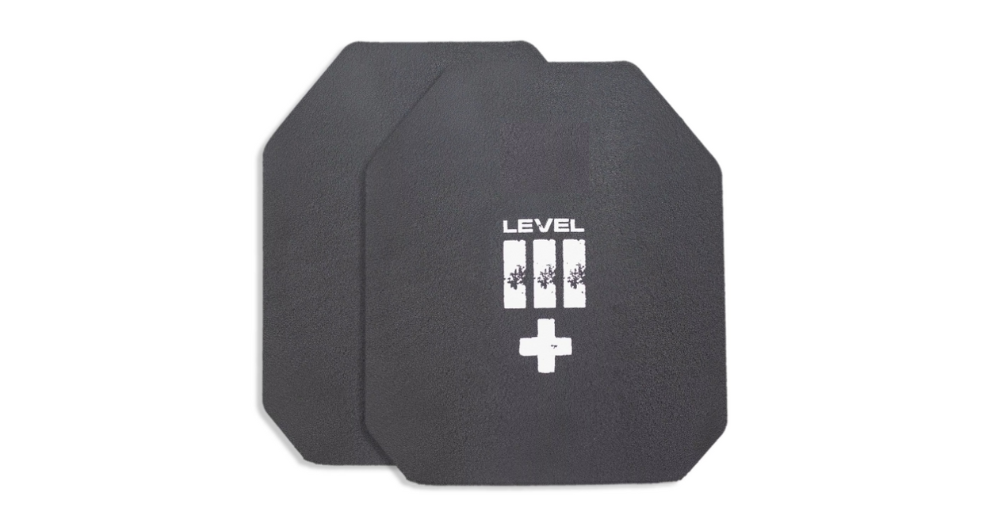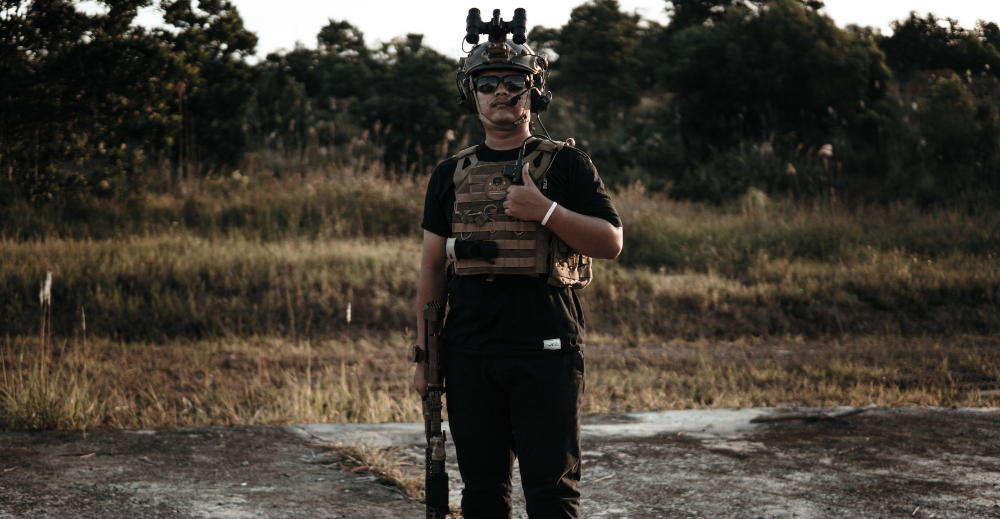Level III vs Level III+ Body Armor: Discover What Sets These Protection Levels Apart
At first glance, Level III and Level III+ body armor might seem identical. Both offer robust protection against high-velocity projectiles, are constructed from advanced materials, and are trusted by professionals in various fields. However, there’s one crucial difference that sets them apart.

This article will unpack everything you need to know about these two armor levels. We'll dive into the specific differences in protection, the advanced materials and technologies used, the rigorous testing standards they meet, and the practical considerations to remember when choosing your armor.
A clear picture of what each body armor level offers will help you make the best choice for your safety needs.
Understanding Body Armor Ratings

Knowing your armor's rating is like knowing the exact specs of a safety net when gearing up for safety. Let's delve into the importance of these ratings and how they help you choose the right type of armor.
The Role of the National Institute of Justice (NIJ)
The National Institute of Justice (NIJ) is the authoritative body that sets standards for body armor. They provide a detailed guide that categorizes armor into different levels, helping you align your protection needs with the danger you might face.
The NIJ’s rating system begins with Level IIA, offering basic protection, and extends to Level IV, which provides the highest degree of defense against high-caliber threats.
Levels of Body Armor
Each level of body armor is designed to offer different degrees of protection, typically defined by the type of ammunition it can withstand. Here’s a quick breakdown:
-
Soft Armor: This includes Level IIA and Level II, which are lighter and designed for protection against lower-velocity handguns. Police officers typically use these in routine situations.
-
Hard Body Armor: This category encompasses Level III and Level IV plates, crafted to resist rifle rounds and essential in high-threat environments.
Importance of Armor Materials and Types
The materials used in body armor, such as steel plates, ceramic composites, and advanced polyethylene, play a critical role in the effectiveness of each level. Armor plates come in various forms:
-
Steel Plates: Known for their strength and durability.
-
Ceramic Plates: Lighter than steel, effective at dispersing the energy of a bullet.
-
Polyethylene Plates: Extremely light, offering high levels of mobility.
Understanding these ratings and the associated materials helps ensure that whether you're a law enforcement officer, a security professional, or a civilian seeking protection, you are effectively armored for the threats you are most likely to face. Knowing the specifics behind each rating can guide you in making an informed decision, balancing safety, comfort, and practicality.
Level III Body Armor: A Closer Look

Level III body armor is tougher than the lighter levels but not as heavy-duty as Level IV. Let's explore why Level III body armor is dependable for many looking to balance protection and mobility.
What Can Level III Body Armor Do?
It's designed to handle 7.62mm FMJ lead core rifle ammunition, which includes the kind of rounds fired by an AK-47. It stops these high-impact bullets and keeps you protected without slowing you down.
What's It Made Of?
Level III armor typically uses ultra-dense materials to do its job. You'll find vests made from layers of super-strong polyethylene or ceramics that catch and break down the bullet upon impact. These materials absorb and disperse the energy of a bullet so it doesn’t pass through to you.
The Specifics on Threats
Level III armor is tested specifically against 7.62mm NATO rounds, similar to what you’d expect from military-grade rifles but in a lead core form. This makes Level III a go-to choice when you need confidence to face these threats head-on and come out safe.
Level III+ Body Armor: Stepping Up Protection

When you’re looking for something a bit tougher than the standard, Level III+ body armor steps up to the plate. It’s designed to offer that extra peace of mind when you're facing some seriously high-powered threats.
Upgraded Capabilities of Level III+ Armor
Level III+ body armor takes everything good about Level III and kicks it up a notch. It's engineered to protect against more potent, high-velocity rounds that might pierce through Level III armor plates.
We’re talking about protection from high-caliber rifle rounds like the 5.56mm M855 green tip, commonly used in military engagements. The key here is the armor’s ability to handle these high-speed projectiles without compromising the wearer’s mobility.
Advanced Materials and Technologies
The materials and construction make Level III+ armor capable of stopping these additional threats. This armor often combines ultra-high-molecular-weight polyethylene (UHMWPE) with ceramics or denser materials that can catch and disperse a bullet's energy more effectively. These materials ensure that the impact won’t be lethal if a bullet hits.
Why Level III+ Exists
While Level III+ is not an official NIJ rating, it has become a common industry practice to use this designation to indicate armor that surpasses Level III protection but does not meet Level IV standards.
This unofficial rating helps identify armor that offers enhanced protection against high-velocity rounds. Since the Level III+ rating is not standardized by the NIJ, it's crucial to review the manufacturer's testing standards and certifications to ensure the armor meets your specific protection needs.
Targeted Threats and Ammunition Types
Diving into specifics, Level III+ body armor is tested to withstand:
-
5.56mm M855 green tip bullets,
-
7.62mm M80 ball rounds,
-
and potentially other high-velocity rifle rounds, depending on the manufacturer's specifications.
Choosing Level III+ means preparing for the worst with the best possible protection without gearing up in full combat armor. It ensures that you have the upper hand in survival, even against tougher odds.
Level III vs. Level III+ Body Armor

When deciding between Level III and Level III+ body armor, the devil is in the details. Both options are excellent, but the best choice depends on your needs. Let's dive into a direct comparison to help you understand the enhancements Level III+ offers over Level III.
Protection Levels
Level III armor is robust and designed to protect against rifle rounds commonly encountered in many conflict scenarios. It's considered hard body armor because of the rigid armor plates used in its design, typically made to stop:
-
7.62mm NATO FMJ rounds
-
Other similar caliber rifle bullets common on the battlefield and in some civilian threats
In contrast, Level III+ armor steps it up a notch. This premier body armor level includes all the protections of Level III plates but adds resistance against even more potent and high-velocity threats, making it a top choice for those facing enhanced combat scenarios. Level III+ armor plates are built to withstand:
-
5.56mm M855 green tip bullets
-
7.62mm NATO FMJ at higher velocities
-
Other high-velocity rounds that can potentially penetrate Level III body armor plates
Why Choose Level III+?
Choosing Level III+ means opting for an additional layer of security. This body armor level caters especially to those in high-risk military or tactical environments where the likelihood of encountering green tip or similar high-velocity ammunition is higher. The upgrade in your body armor protection could make a significant difference when milliseconds and millimeters matter.
Threats Each Armor Level Can Withstand
Level III Body Armor:
-
Protects against 7.62mm NATO FMJ rounds.
-
Ideal for traditional battlefield engagements and some civilian defense scenarios.
Level III+ Body Armor:
-
Protects against 5.56mm M855 green tip bullets, known for their penetrating power.
-
Covers all threats included at Level III body armor plates, with added protection against higher velocity and enhanced penetration rounds.
-
Best for high-threat military operations and when facing adversaries equipped with modern, high-velocity firearms.
While Level III body armor plates provide solid protection, Level III+ enhances that safeguard, tailoring it to contemporary threats that might overwhelm lesser protection.
Practical Considerations for Choosing Between Level III and Level III+

Deciding between Level III and Level III+ body armor isn't just about stopping power but also how it fits into your daily responsibilities. Here’s a look at some practical considerations to remember—from the weight to the cost—that can help you decide which option is best for your needs.
Weight Differences and Mobility
When you strap on a plate carrier, you’re adding weight. But the type of armor plate you choose affects just how much.
Level III body armor plates are heavy enough as they are designed to stop rifle rounds. Level III+ plates, which offer enhanced protection, tend to be even heavier. This extra weight can impact your mobility, which is crucial to consider if you need to move quickly or maneuver in tight spaces.
Comfort and Wearability for Extended Periods
Comfort is crucial, especially when you're wearing armor for long hours. Level III and Level III+ plate carriers are designed for extended wear, but the added weight of Level III+ can make a noticeable difference as the hours add up.
If your role requires long periods of wear, consider the ergonomics of the armor—look for features like padded straps, moisture-wicking fabrics, and breathable materials that help make the load more bearable.
Cost Comparison and Budget Considerations
Cost is always a consideration when upgrading equipment. Level III+ armor, with its superior protection, tends to be more expensive than Level III body armor. When planning your budget, weigh the potential risks against the investment in armor. It might be worth spending extra if it means higher safety, but Level III could be sufficient for some without stretching resources too thin.
Contextual Use: Choosing the Right Tool for the Job
Consider your specific use case:
-
Law enforcement officers might prefer Level III body armor for everyday patrol due to its lighter weight and sufficient protection against common threats.
-
Military personnel might lean towards Level III+ in combat zones where high-velocity rounds are more prevalent.
-
The choice for personal protection often depends on the threat level you expect to face and personal comfort with the armor’s weight and cost.
Each scenario demands a different approach, and choosing the right plate carrier and armor plate setup is crucial. It's not just about what protects you best on paper, but what armor fits your life, duties, and the threats you realistically face.
Tailoring Armor to Your Needs

Choosing between Level III and Level III+ body armor comes down to understanding your specific needs and the scenarios you might face. Both options offer excellent protection, but the best choice depends on the threats you expect, your need for mobility and comfort, and your budget.
What about you? Have your tried either one of these protective body armor plates? Which one did you prefer? Let us know in the comments below!





